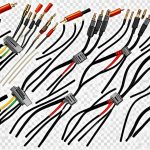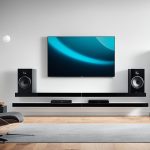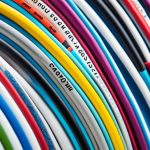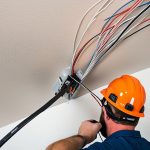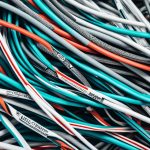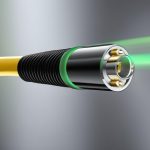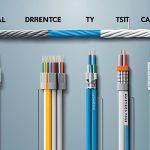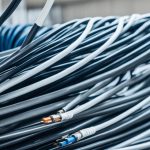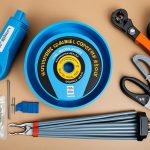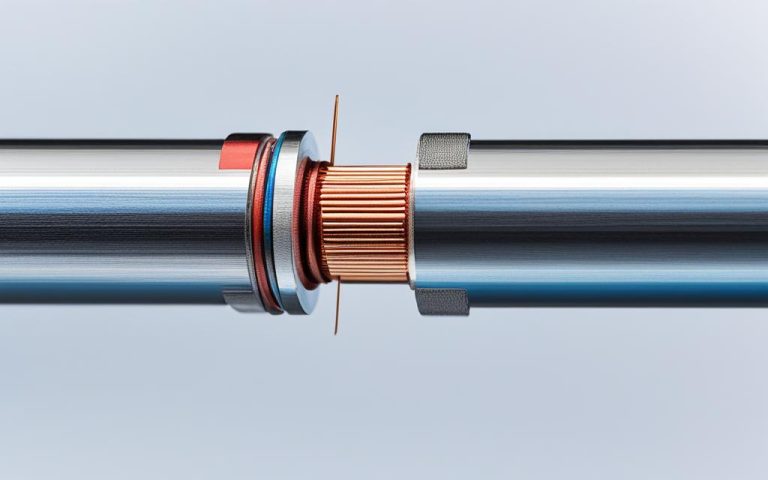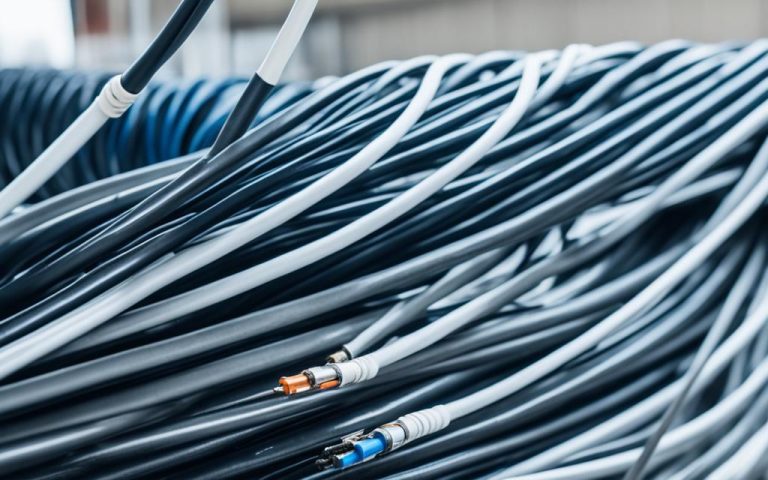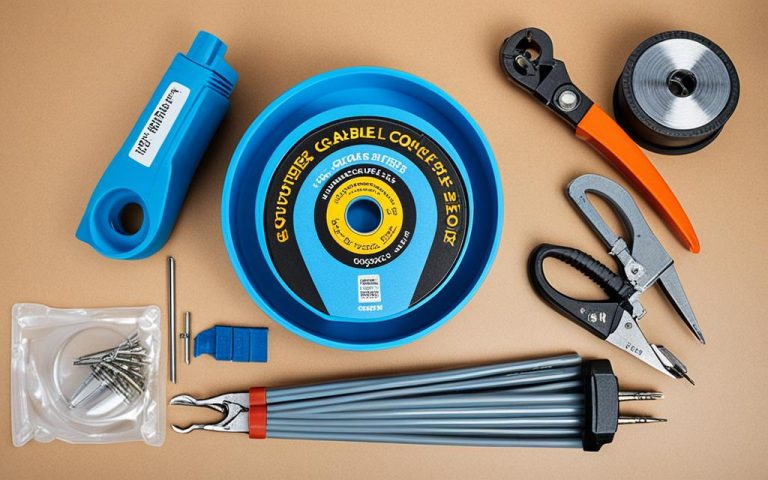Coaxial cables are a critical component in audio systems, but they are often subject to numerous myths and misconceptions. In this article, we will debunk the common misconceptions surrounding coaxial cables and provide you with accurate information to make informed decisions.
As technology continues to advance, it’s essential to separate fact from fiction to maximize the performance of your audio setup. The image below illustrates the complexity of coaxial cables and the various components involved.
Let’s explore some of the most common misconceptions about coaxial cables, such as the “skin effect” problem, the use of batteries to reduce distortion, and cryogenically freezing cables for better performance. By understanding the truth behind these myths, you can ensure optimal audio quality and avoid falling prey to marketing gimmicks.
The Importance of Low DC Resistance in Speaker Cables
When it comes to speaker cables, one key metric that should not be overlooked is low DC resistance. Why is this metric so important? Well, the lower the gauge of the cable, the less resistance it will have. And when it comes to electrical signals, low resistance is crucial for optimal performance.
Gene DellaSala, President of Audioholics.com, recommends using 12 AWG speaker wire or lower to ensure the best performance from your speakers. By prioritizing low DC resistance, you can minimize insertion loss and achieve the highest quality sound reproduction.
To better understand the relationship between cable gauge, speaker impedance, and cable length, refer to the table below:
| Cable Gauge (AWG) | Speaker Impedance (Ohms) | Maximum Cable Length (Feet) |
|---|---|---|
| 12 | 2-6 | 50 |
| 10 | 2-6 | 100 |
| 8 | 2-6 | 200 |
| 12 | 8 | 100 |
| 10 | 8 | 200 |
| 8 | 8 | 400 |
As you can see from the table, the recommended AWG of cable varies depending on the speaker impedance and cable length. This ensures that the cable’s low resistance is matched appropriately to the speaker’s electrical characteristics, resulting in optimal performance.
By emphasizing low DC resistance in your speaker cables and selecting the appropriate gauge based on speaker impedance and cable length, you can enjoy a more accurate and immersive audio experience.
Remember, low DC resistance is key to unlocking the full potential of your audio system, so don’t overlook its importance when choosing speaker cables.
Debunking Pseudoscience in Cable Manufacturing
Exotic cable manufacturers often resort to pseudoscience to market their products, taking advantage of misconceptions in the audio industry. One of the common myths perpetuated by these companies is the problem of the “skin effect” in audio cables. The skin effect refers to how resistance and inductance change in a cable with frequency. While this phenomenon is a legitimate concern for RF engineers in high-frequency applications, it is mostly negligible at audio frequencies.
Some companies claim to address this issue by using high gauge conductors in their cables. However, these cables often end up having higher resistance than ordinary 12 AWG speaker cables, which prioritizes low DC resistance. The benefits touted by these exotic cable manufacturers are based on pseudo-science rather than scientific evidence.
Another pseudoscientific claim made by these cable manufacturers is the idea of non-linear distortion introduced by the wire or dielectric material in the cable. They allege that their cables can minimize this distortion, but the fact remains that non-linear distortion in cables is immeasurable even with sensitive test equipment.
Additionally, cryogenically freezing cables is another non-scientific practice propagated by some manufacturers. The concept of cryogenic freezing leading to improved audio quality has no basis in scientific reality. These pseudoscientific claims aim to create a perception of a magical improvement in audio quality that cannot be substantiated.
Exotic cable companies often take advantage of the fact that many audiophiles and reviewers do not have an electrical engineering degree, and they manipulate scientific principles into pseudoscience.
It’s important for consumers to approach these claims with skepticism and rely on scientifically proven principles when selecting audio cables. By focusing on the low DC resistance and avoiding falling for pseudoscientific marketing tactics, consumers can make informed decisions about their cable purchases.
Debunking Pseudoscience in Cable Manufacturing: Key Points
- Exotic cable manufacturers use pseudoscience to market their products.
- The “skin effect” and non-linear distortion claims lack scientific evidence.
- Cryogenically freezing cables has no scientific benefits.
- Consumers should prioritize low DC resistance and rely on scientifically proven design principles.
Key Quote
“Exotic cable companies often take advantage of the fact that many audiophiles and reviewers do not have an electrical engineering degree, and they manipulate scientific principles into pseudoscience.”
By debunking the pseudoscience surrounding cable manufacturing, we can separate fact from fiction, enabling consumers to make well-informed decisions based on sound engineering principles rather than marketing gimmicks.
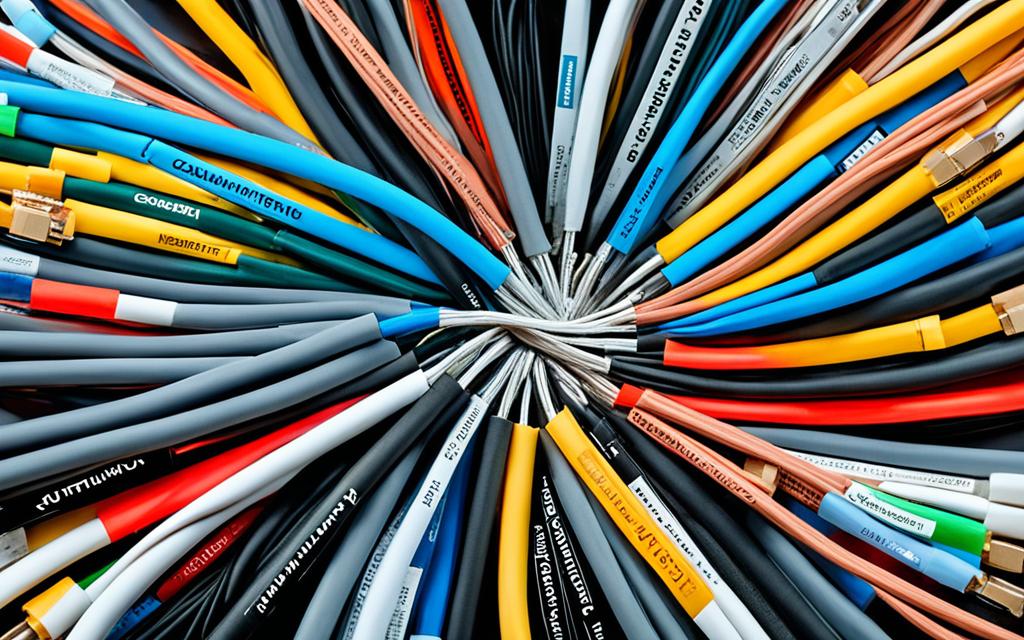
Debunking Myths About Cable Break-in and Battery Usage
When it comes to coaxial cables, there is a lot of misinformation floating around. One of the common myths perpetuated by cable manufacturers is the notion of cable break-in. They claim that the sound quality of a cable will improve over time as it “breaks in.” However, this is nothing more than a fallacy with no scientific basis. The truth is, music is an AC waveform that is constantly changing, and a cable cannot optimize itself or align to an optimal state over time.
Another myth that often circulates in the audio industry is the idea of using batteries on cables to reduce distortion. Some claim that by placing batteries across the dielectric of a cable, they can achieve a cleaner signal and lower distortion. In reality, this practice has no effect on the cable’s performance. The battery does not conduct or interact with the cable in any meaningful way.
These myths are examples of deliberate misdirection and obfuscation used by exotic cable companies to sell their products. By perpetuating these falsehoods, they create an illusion of superior performance and deceive consumers into purchasing overpriced cables with no real benefits.
“Cable break-in and the use of batteries on cables to reduce distortion are nothing more than marketing tactics. They have no basis in scientific fact.” – Gene DellaSala, President of Audioholics.com
It is important for consumers to be aware of these myths and approach them with a critical mindset. By relying on factual information and scientific principles, individuals can make informed decisions about their cable purchases. When it comes to reducing distortion and maximizing performance, it is essential to focus on factors that actually matter, such as low DC resistance and solid engineering principles.
Debunking Cable Break-in and Battery Usage Myths
| Myth | Fact |
|---|---|
| Cable break-in improves sound quality. | Cable break-in is a fallacy with no basis in science. The sound quality remains unchanged over time. |
| Using batteries on cables reduces distortion. | Batteries have no effect on cable performance and do not reduce distortion. This practice is based on false claims. |
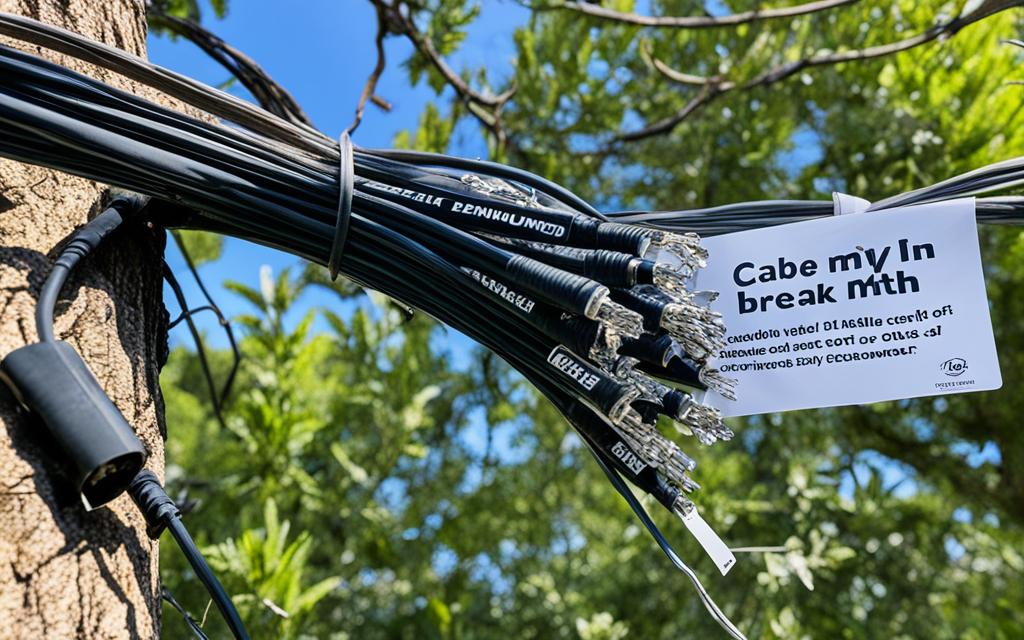
By understanding and debunking these myths, consumers can navigate the market with confidence, making choices based on facts rather than fiction. It is crucial to prioritize accurate information and debunk pseudoscientific claims to ensure a better understanding of coaxial cables and avoid unnecessary expenditure on deceptive products.
The Need for FCC Oversight and Misconceptions About Broadband Networks
The Federal Communications Commission (FCC) plays a crucial role in ensuring fair practices and protecting consumers in the realm of broadband networks. However, there are several misconceptions surrounding the FCC’s proposed policies. Shedding light on these misconceptions is imperative for a thorough understanding of the FCC’s role and its impact on broadband networks.
One prevalent myth is that the FCC’s Third Way proposal for broadband policy serves as a distraction from the implementation of the National Broadband Plan. Contrary to this belief, re-establishing the FCC’s authority over broadband networks is vital to achieving the goals outlined in the National Broadband Plan.
Another misconception concerns the potential effects of the FCC’s proposed policy on broadband adoption in low-income communities. It is falsely believed that the FCC’s actions may jeopardize broadband access for those in need. However, classifying broadband as a telecommunications service, as proposed by the FCC, would actually enable the expansion of programs aimed at supporting broadband access for low-income consumers.
Furthermore, there are misconceptions surrounding the anticipated impact of re-establishing FCC authority on investment and job losses. Historical data and industry analysis refute these claims, highlighting the importance of basing opinions on factual information rather than unfounded assumptions.
By debunking these misconceptions and gaining accurate knowledge about the FCC’s oversight and policies, stakeholders in the broadband industry can make well-informed decisions that positively impact both consumers and the overall broadband ecosystem.
Conclusion
Separating fact from fiction is crucial when it comes to coaxial cables and broadband networks. These subjects are riddled with myths and misconceptions perpetuated by individuals and companies with vested interests. However, by debunking these myths and relying on factual information, consumers and policymakers can make well-informed decisions regarding their cable and network choices.
When it comes to speaker cables, it is essential to prioritize low DC resistance and avoid falling for pseudoscience marketing tactics. Many exotic cable manufacturers manipulate scientific principles into misleading claims, but it is important to understand that higher gauge conductors do not necessarily provide better performance. In fact, choosing cables with lower gauge and solid engineering based on proven design principles is key to achieving optimal speaker performance.
In the realm of broadband networks, myths and misconceptions also abound. The importance of FCC oversight cannot be underestimated. It is necessary for ensuring fair practices and protecting consumers. Yet, it is equally crucial to address misconceptions surrounding FCC policy proposals. Misinformation can hinder progress towards achieving the goals of the National Broadband Plan and expanding broadband access in low-income communities. By relying on accurate information and debunking myths, we can ensure a better understanding of coaxial cables and broadband networks, ultimately leading to better choices and outcomes.
FAQ
What is a common misconception about coaxial cables?
One common misconception is the belief in the “skin effect” problem, where companies claim to reduce the effect by using high gauge conductors. However, these cables often have higher resistance than ordinary 12 AWG speaker cables.
What is the most important metric when dealing with speaker cables?
The most important metric when dealing with speaker cables is low DC resistance. The lower the gauge of the cable, the less resistance it will have.
How can I choose the right speaker cable for my setup?
It is recommended to use 12 AWG speaker wire or lower for optimal performance. Gene DellaSala suggests referring to a table that provides recommendations based on the length of the run and the impedance of the speakers.
What are some myths perpetuated by exotic cable manufacturers?
Exotic cable manufacturers often use pseudoscience to market their products. One common myth they perpetuate is the problem of “skin effect,” which is mostly negligible at audio frequencies. Another myth is the introduction of non-linear distortion by a piece of wire or dielectric in the cable, which is immeasurable even with sensitive test equipment.
Is there any benefit to cable break-in or cryogenically freezing cables?
No, cable break-in is a fallacy with no basis in science. The idea that the cable’s sound will improve over time is unfounded. Cryogenically freezing cables is also a non-scientific practice that has no real benefits.
What are some misconceptions about the FCC’s oversight over broadband networks?
One common myth is that the FCC’s proposed policy will jeopardize broadband adoption in low-income communities. In reality, the FCC needs to classify broadband as a telecommunications service to expand programs that support broadband access for low-income consumers. Another myth is the impact on investment and job losses, which historical data and industry analysis refute.
Why is it important to rely on factual information when dealing with coaxial cables and broadband networks?
It is crucial to separate fact from fiction in order to make informed decisions. Many myths and misconceptions surround these topics, perpetuated by companies and individuals with vested interests. By relying on factual information, consumers and policymakers can ensure better choices and outcomes.


